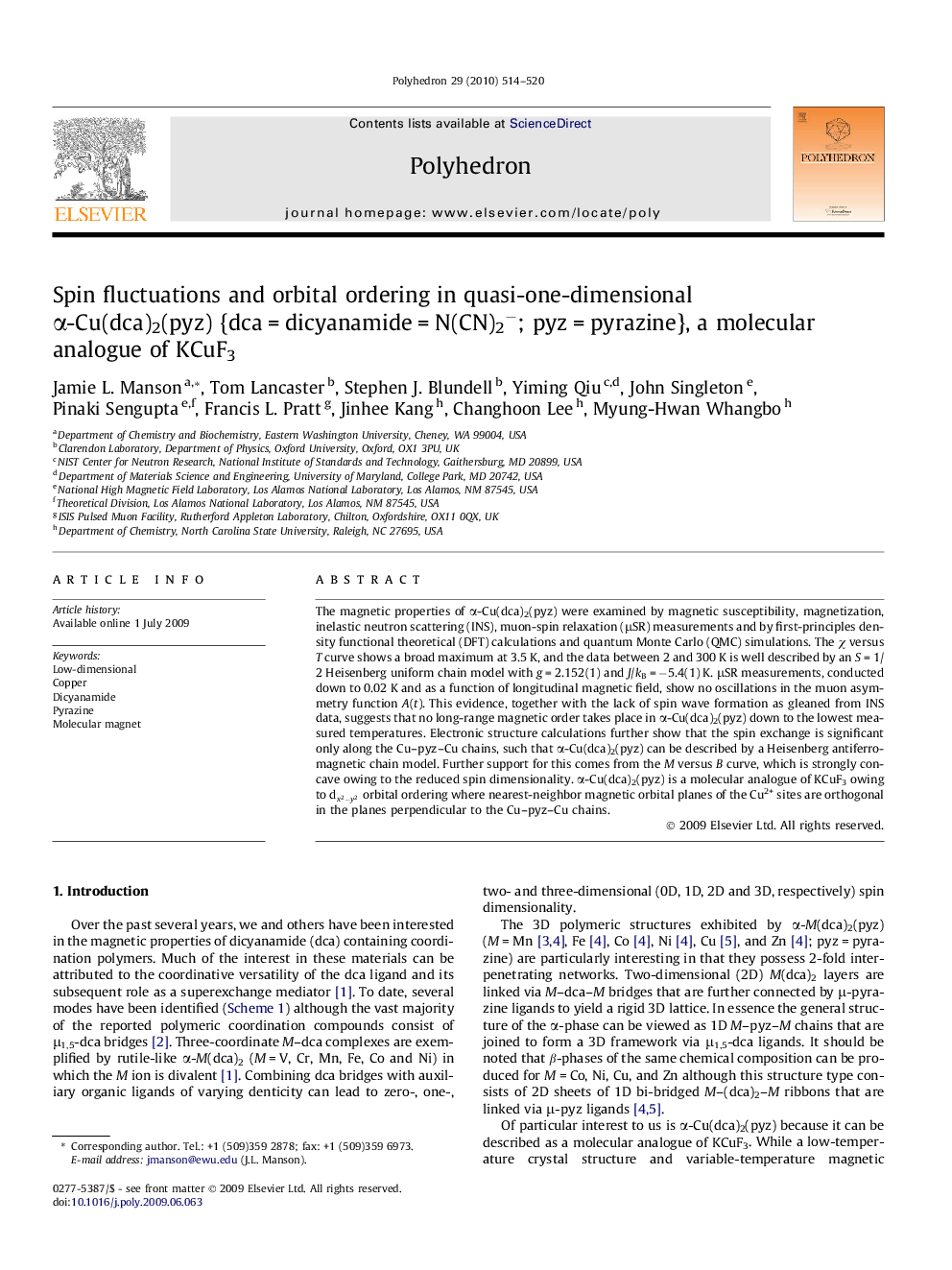| Article ID | Journal | Published Year | Pages | File Type |
|---|---|---|---|---|
| 1339540 | Polyhedron | 2010 | 7 Pages |
The magnetic properties of α-Cu(dca)2(pyz) were examined by magnetic susceptibility, magnetization, inelastic neutron scattering (INS), muon-spin relaxation (μSR) measurements and by first-principles density functional theoretical (DFT) calculations and quantum Monte Carlo (QMC) simulations. The χ versus T curve shows a broad maximum at 3.5 K, and the data between 2 and 300 K is well described by an S = 1/2 Heisenberg uniform chain model with g = 2.152(1) and J/kB = −5.4(1) K. μSR measurements, conducted down to 0.02 K and as a function of longitudinal magnetic field, show no oscillations in the muon asymmetry function A(t). This evidence, together with the lack of spin wave formation as gleaned from INS data, suggests that no long-range magnetic order takes place in α-Cu(dca)2(pyz) down to the lowest measured temperatures. Electronic structure calculations further show that the spin exchange is significant only along the Cu–pyz–Cu chains, such that α-Cu(dca)2(pyz) can be described by a Heisenberg antiferromagnetic chain model. Further support for this comes from the M versus B curve, which is strongly concave owing to the reduced spin dimensionality. α-Cu(dca)2(pyz) is a molecular analogue of KCuF3 owing to dx2-y2dx2-y2 orbital ordering where nearest-neighbor magnetic orbital planes of the Cu2+ sites are orthogonal in the planes perpendicular to the Cu–pyz–Cu chains.
Graphical abstractThe α-form of Cu(dca)2(pyz) has been shown to exhibit an unusual dx2-y2dx2-y2 orbital ordering akin to the perovskite KCuF3. Magnetic property measurements and electronic structure calculations confirm the predominant one-dimensional magnetism in α-Cu(dca)2(pyz) which is propagated along the Cu–pyz–Cu chain.Figure optionsDownload full-size imageDownload as PowerPoint slide
